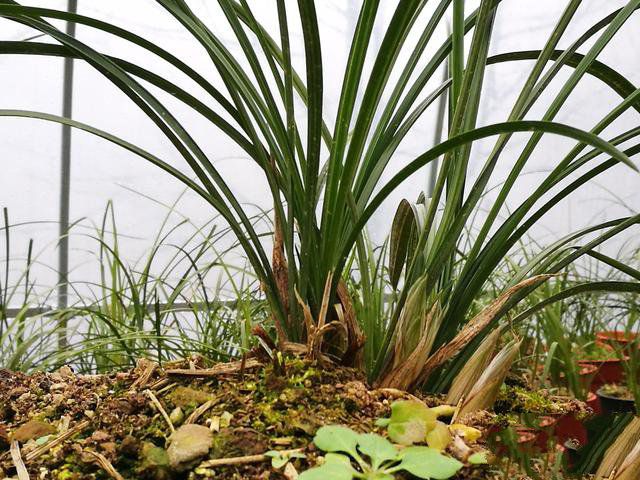How to use potassium dihydrogen phosphate to water orchids? What should I pay attention to?

Do not irrigate orchids with potassium dihydrogen phosphate! Potassium dihydrogen phosphate is a foliar fertilizer, perhaps in other plants when applied, can irrigate roots, but orchids must not use, good farmers are their own experiments.
Once, a good farmer found a pot of cymbidium sent three flowers arrows, look at the leaves feel like less fat, because I usually basically do not fertilize. Considering that so many arrows need to consume a lot of nutrients, I poured potassium dihydrogen phosphate into the root of this pot of cymbidium, with a concentration of between 500---700 (no measuring cup). At the same time, there are several pots of the same cymbidium, also placed in the same environment, without root irrigation potassium dihydrogen phosphate. Half a month later, all the buds of cymbidium irrigated by roots died, while the other pots grew vigorously and vividly, and later flowers and seedlings were good.
The key problem was still behind. After more than a month, the potted cymbidium began to wither slowly, feeling like stem rot, one seedling dying next to another. Finally, he had to cut the plants upside down to save the remaining two seedlings.
Related
- Is the orchid suitable for indoor use? Is it good for the body?
- How to prevent the empty root of orchids?
- What to do after the crab claw orchid is withered?
- Why are the leaves of orchids always yellow? Fertilizing and watering.
- Can the root of the gentleman orchid be saved if it is rotten?
- Diagnosis and treatment of cotton-blowing beetle insects in Cymbidium
- There is a way for a gentleman's orchid to rot.
- What is the most suitable temperature and humidity for the orchid?
- How to raise a gentleman's orchid? Cultivation techniques of Cymbidium
- How to prepare the nutritive soil for the cultivation of Cymbidium


